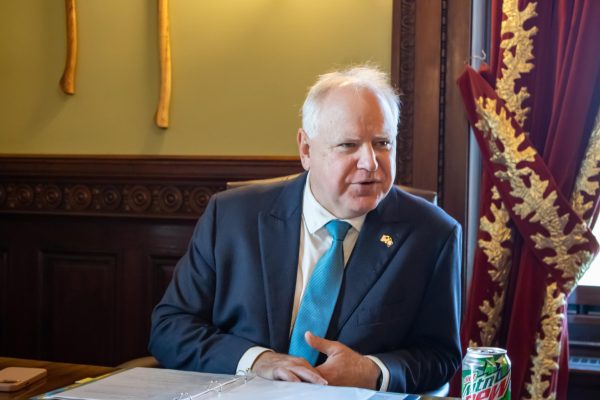Although most of the buzz in political circles these days is about bailout bills and the countryâÄôs economic woes, another debate has been raging in the state Capitol: who should have access to health care? To date, two major plans have been circulated, each in direct conflict with the other. Gov. Tim Pawlenty has suggested cutting health care coverage for tens of thousands of Minnesotans in order to alleviate millions of dollars from the stateâÄôs deficit. On the other end of the spectrum, Sen. John Marty, DFL-Roseville, has put forth the Minnesota Health Act , which would create a single-payer health plan for the state. For college students, the fate of these two propositions could have a huge impact. MartyâÄôs bill has passed through the Health, Housing and Family Security, and the Commerce and Consumer Protection committees, Barb Jacobs , MartyâÄôs legislative assistant, said. A single-payer health plan would provide âÄúall medically necessary careâÄù to Minnesotans, said Lisa Nilles, a board member of the Minnesota Universal Health Care Coalition. âÄúItâÄôs based on your ability to pay,âÄù she said. âÄúWe call it a premium, but itâÄôs like a progressive income tax that goes into a health care fund.âÄù Unemployment has soared in the last six months, and jobs of any sort are few and far between. âÄúIf youâÄôre someone who lacks insurance, it just got a lot harder,âÄù said Larry Jacobs , director of the UniversityâÄôs Center for the Study of Politics and Governance. Historically, health insurance coverage has been one of the first programs on the chopping block in times of economic downturn. Minnesota Care, a state program to help people who donâÄôt qualify for federal aid but canâÄôt afford health coverage of their own, saw its coverage reduced in the last budget crisis in 2003, Larry Jacobs said, and Pawlenty has proposed scaling back the program yet again. Although Minnesota has been consistently among the states with the lowest numbers of uninsured, as the economy worsens, âÄúemployers are cutting back, either in terms of offering coverage, or in terms of the cost burden on their employees,âÄù Larry Jacobs said. College students fall into the largest group of uninsured Minnesotans, according to the Minnesota Department of Health, with just less than a fifth of 18- to 24-year-olds being reported as uninsured in 2007. Any of the potential outcomes would have an effect on students, said Dr. Edward Ehlinger , director and chief health officer of Boynton Health Service. âÄúIf families are cut off from Minnesota Care âĦ if they make eligibility for medical assistances more difficult âĦ it will affect a large number of students,âÄù he said. In the meantime, Ehlinger said the staff at Boynton is trying to ensure students and families have information about the Boynton student health plan. âÄúIf they are having problems with dependent coverage, the student health benefit plan âĦ is a good way to keep somebody on a really good health plan without spending a whole lot of money,âÄù he said. The student health plan costs $852 per semester for undergraduate students paying the student services fees. Ehlinger said although the University hasnâÄôt taken an institutional stance on the subject, he personally supports the idea of a single-payer health plan for the state. âÄúIt would save a lot of money in terms of the administrative costs,âÄù he said. âÄúAnd those dollars could then go into improving access to care.âÄù But this may not be the year single-payer health care comes to Minnesota, and even the author of the Minnesota Health Act is willing to admit that. âÄúItâÄôs not likely the bill will pass this year,âÄù Barb Jacobs said on behalf of Marty. âÄúItâÄôs a multi-year initiative.âÄù âÄî Emma L. Carew is a senior staff reporter.
Health care coverage hangs in balance
Editor’s note: This is the first story in an occasional series that will provide updates and analysis on issues related to health policy.
Published February 16, 2009
0
More to Discover







